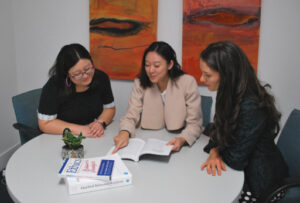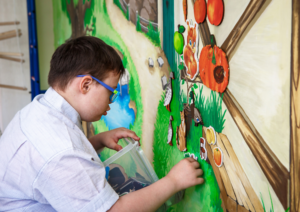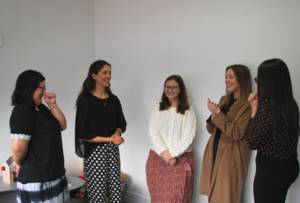


Applied Behaviour Analysis (ABA) is the science of behaviour and learning applied to teaching valuable skills to improve a person’s quality of life. As ABA is a science, it is constantly evolving and improving to meet the needs of the people we serve. It is more than a ‘toolbox’ or ‘strategies’, but a science applied in an individualised way to each client and then systematically reviewed to ensure the intervention is effective.
In June 2020, the phrase “Today’s ABA” was coined by Dr Gregory Hanley from FTF Behavioural Consulting. Hanley defined “Today’s ABA” as prioritising compassion and trauma-informed care in everyday practice. This included learning more about the clients with whom we work by:
In today’s blog, we will explore more about how to create joy and support the client to be happy, relaxed and engaged in ABA.
Initially, “happy, relaxed and engaged” (HRE) was defined as the client having a positive affect and being engaged in activities (Metras & Jessel, 2021). This indicated that the client was engaged in activities that were highly reinforcing to them.
Developing HRE is important for several reasons. Firstly, this ensures the client is experiencing joy in their ABA sessions which is critical for their quality of life and development of trust, rapport and safety. Secondly, HRE is a rich environment of reinforcers for the client and therefore provides a highly effective teaching environment. As stated by Gover, Staubitz and Juarez (2022, p.74): “A meaningful reinforcement context is a useful tool for teaching important skills.” While a singular reinforcer can be effective, a rich HRE context provides a strong foundation for trust, rapport and teaching.
Importantly, HRE is individualized to the learners needs and preferences. Identifying each learner’s unique preferences starts with a fun, safe environment where the clinician observes the learner’s interests and seeks to learn more about what they enjoy. It’s also important to remember that this may change over time and across different environments too.
By observing the learner’s free play and asking oneself these questions, the clinician can identify a learner’s idiosyncratic HRE context and, therefore, what brings them joy!
It is important to note that each learner may have a variety of different contexts that bring them joy. For example, they may enjoy water play with the sprinkler and buckets outside with their sibling, or when inside they may enjoy playing with Thomas the Tank Engine trains on the train table on their own. They may enjoy watching the iPad and having another person share enjoyment and comment with them, or they may enjoy watching specific scenes of a movie on the TV without others interrupting or speaking over the video. It is critical to identify all aspects of a learner’s HRE and identify any and all contexts where they show joy.
The process of observing, identifying and engaging in a client’s HRE context builds trust and rapport. The time spent observing a client’s highly preferred play without giving instructions develops trust that the clinician will not unpredictably interrupt the client’s favourite things. The time spent engaging in a client’s HRE context in the way they enjoy develops rapport – in these times, the clinician is only seeking to enrich the client’s joy in play!
This time also allows the clinician to understand the client’s HRE context and behaviour. Without understanding HRE, the clinician may inadvertently trigger the client’s behaviours of concern by accidentally disturbing their HRE. Furthermore, learning will be more effective if the clinician can provide a rich reinforcement context, rather than a single toy or activity. Teaching through joy is not only more effective but also provides a more robust reinforcement environment for the learner.
Providing a rich HRE context for clients is critical to developing trust, rapport and dignity in ABA sessions. As stated by Dr Hanley (2020), show your client that “you know them, you see them, you hear them, and you are there for them. This is the first and crucial step in today’s ABA.”
References:




Facebook
Twitter
WhatsApp